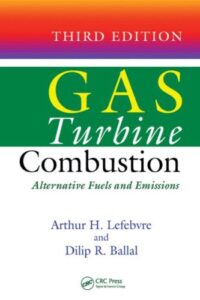GAS Turbine Combustion Alternative Fuels and Emissions 3rd Edition
GAS Turbine Combustion Alternative Fuels and Emissions 3rd Edition
GAS Turbine Combustion Alternative Fuels and Emissions 3rd Edition has a clear purpose; it is directed primarily toward those who design, manufacture, and operate gas turbines in applications ranging from aeronautical to power generation. It serves as a graduate-level textbook, design manual, and research reference in the field of gas turbine combustion. The text is essentially self-contained and assumes only a modest prior knowledge of physics and chemistry. In preparation for the twenty-first century, the second edition was thoroughly revised and updated with numerous changes.
Developments in gas turbine technology continue to meet the propulsion, power, fuel efficiency, and low pollutant emissions needs of the twenty first century. Professor Arthur Lefebvre passed away in 2003.
You can also Read Gas Turbine Handbook Principles and Practices 3rd Edition
GAS Turbine Combustion Alternative Fuels and Emissions 3rd Edition
- Preface
![GAS Turbine Combustion GAS Turbine Combustion]()
- Authors
- Basic Considerations
- Combustion Fundamentals
- Diffusers
- Aerodynamics
- Combustion Performance
- Fuel Injection
- Combustion Noise
- Heat Transfer
- Emissions
- Alternative Fuels
- References
- Author Index
- Subject Index
The most significant change has been the addition of a new Chapter 10, “Alternative Fuels” and the book’s subtitle Alternative Fuels and Emissions. Today, the ever-rising cost of petroleum fuel is prompting research into developing alternative liquid fuels based on coal, biomass, and other feedstock. Depleting global resources of petroleum fuel combined with increasing
terrorist activities are leading various industrialized and developing countries to develop domestic sources of fuel for assured supply and energy security.
The future of the alternative fuel industry in the forthcoming decade depends upon the right fuel properties and handling characteristics for the engines and infrastructure already in place; environmental impact, which includes competition with food, water, and land; CO2 life cycle analysis and carbon footprint issues; and economics of return on investment, production, and sustainability


Comments are closed.